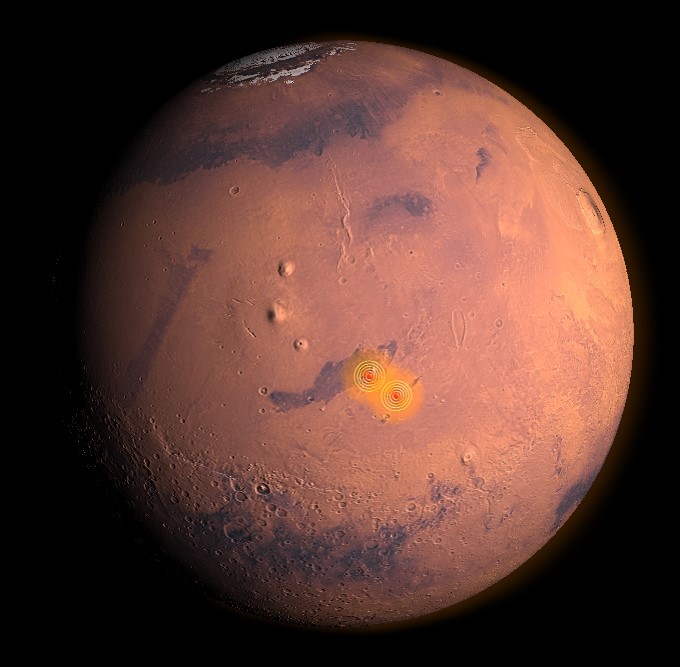NASA's Mars Lander 'Mole' Is Digging Again as Marsquake Mystery Baffles Scientists
Digging a little deeper -The mole has moved further down. With help from @NASAJPL and @DLR_en, my latest efforts to help the heat probe seem to be working. More digging to come. pic.twitter.com/JumZaqAecYDecember 16, 2019
The troubled "mole" on NASA's InSight Mars lander is moving again, even as scientists working on the robot's seismometer ponder new marsquake mysteries.
InSight touched down in November 2018 on a quest to understand the interior of the Red Planet. Two of its crucial tools for that task were a burrowing heat probe nicknamed the mole and a super-sensitive seismometer to study motion within the planet.
But soon after spacecraft personnel told the mole to get digging, something went wrong, and scientists and engineers affiliated with the mission have been strategizing ways to get the instrument moving ever since.
Related: NASA's InSight Mars Lander 'Hears' Martian Wind, a Cosmic First
The team photographed the situation from every angle possible, pondered the likelihood of hidden rocks, evaluated soil characteristics and mimicked the situation with a replica instrument here on Earth. At one point in October, the mole popped out of Mars, as if it had simply had enough of the whole situation.
Most recently, the InSight team tried maneuvering the lander's arm to gently press sideways on the mole. On Nov. 21, NASA announced that the technique had successfully let the probe dig itself down about 1.25 inches (32 millimeters). And on Dec. 16, the agency said that the mole was continuing to burrow properly.
The update did not include details on how far the probe has moved, but a gif accompanying the tweet suggests that the probe, which measures 15.7 inches (400 mm) in length, dug about 2.5 inches (65 mm) between and Dec. 7 and Dec. 14. "More digging to come," the update concluded.
Get the Space.com Newsletter
Breaking space news, the latest updates on rocket launches, skywatching events and more!
A Martian seismic mystery
Meanwhile, the team working on InSight's seismometer is also keeping busy. On Dec. 16, the group posted that "significant" marsquakes detected on May 22 and July 25 originated in a tectonic structure called Cerberus Fossae, making the area "the first active seismic zone ever discovered on Mars," according to a statement posted to the instrument's Twitter feed.
However, the scientists working with the instruments are waiting to share more information about the discovery until research papers on the topic are published.

The same instrument team announced today (Dec. 18) in a similarly brief update that the seismometer seems to have detected a new phenomenon as well.
"The @NASAInSight seismometer has discovered a strange, continuous signal at 2.4 Hz, apparently not related to the lander or weather activity, but excited by a lot of #MarsQuake," the statement read. "This puzzling resonance acts as a natural seismic amplifier!" What that means for the planet remains unclear.
"Mars is full of mysteries," the team wrote.
- Mars InSight in Photos: NASA's Mission to Probe Core of the Red Planet
- Journey to the Center of the Red Planet: NASA's InSight Lander to Reveal the Secrets Inside Mars
- Robot 'Mole' on Mars Begins Digging Into Red Planet This Week
Email Meghan Bartels at mbartels@space.com or follow her @meghanbartels. Follow us on Twitter @Spacedotcom and on Facebook.

Join our Space Forums to keep talking space on the latest missions, night sky and more! And if you have a news tip, correction or comment, let us know at: community@space.com.

Meghan is a senior writer at Space.com and has more than five years' experience as a science journalist based in New York City. She joined Space.com in July 2018, with previous writing published in outlets including Newsweek and Audubon. Meghan earned an MA in science journalism from New York University and a BA in classics from Georgetown University, and in her free time she enjoys reading and visiting museums. Follow her on Twitter at @meghanbartels.









